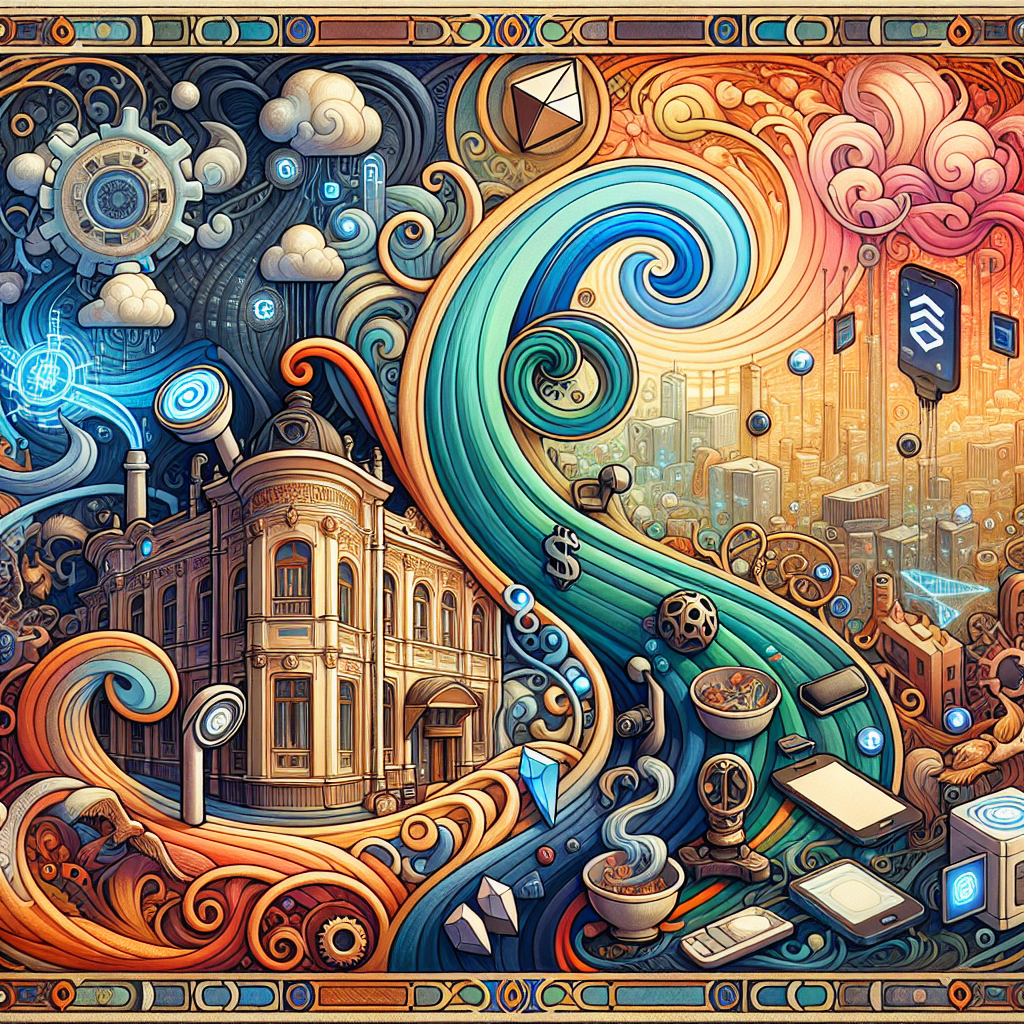Beyond Tokenization: Why the Future of RWAs Isn't Just About Blockchain

In the rapidly evolving landscape of tokenized real-world assets (RWAs), there's a whisper growing louder in investment circles: blockchain might not be the ultimate hero of this financial revolution after all. While distributed ledger technology undoubtedly provided the initial infrastructure for tokenization, the next wave of innovation is coming from elsewhere—specifically from AI, IoT, and smart sensor technologies.
The Current Limitations of Blockchain in RWA Tokenization
Before we discuss the technologies stealing blockchain's spotlight, let's acknowledge the elephants in the blockchain room:
- The Custody Conundrum: Blockchain excels at tracking digital ownership, but someone still needs to hold and verify the actual physical asset. And no, putting your Manhattan skyscraper on a hardware wallet isn't quite possible yet—I've tried, and the doorman was remarkably unimpressed.
- Token Holder Claims: Defining exactly what rights come with your token remains challenging. Is it ownership? Revenue share? The right to look at a picture of the asset and sigh wistfully?
- Control Mechanisms: The degree of control token holders have affects their protection and usage opportunities—a problem blockchain alone doesn't solve.
- Regulatory Uncertainty: Different asset classes face varying regulatory requirements, and there's ongoing debate about whether tokens should be classified as securities, commodities, or something else entirely ("digital magic beans" is not yet an official SEC classification).
Enter the New Tech Triumvirate: AI, IoT, and Smart Sensors
How AI is Revolutionizing Asset Valuation and Verification
While blockchain can record that you own something, artificial intelligence is transforming how we determine what that something is actually worth:
- Enhanced Asset Valuation: AI algorithms analyze vast datasets including market trends, asset performance history, and economic indicators to provide dynamic, accurate pricing—far beyond what static blockchain oracles can deliver.
- Machine Learning Models: Techniques like hierarchical clustering and artificial neural networks identify comparable assets and estimate values with remarkable precision, bringing consistency to previously subjective processes.
- Automated Compliance: NLP algorithms parse legal documents in seconds, handling the compliance burden that blockchain alone cannot address.
- Risk Management: AI-driven predictive analytics identify potential risks associated with assets in real-time, something a blockchain's immutable ledger simply cannot do without external inputs.
For example, in commercial real estate tokenization, AI systems can now conduct continuous valuation updates based on hundreds of factors ranging from neighborhood development patterns to the quality of nearby coffee shops (apparently, the arrival of a third-wave coffee roaster increases property values by 3.2%—the "espresso effect" is real, folks).
IoT and Smart Sensors: The Real-World Connection Blockchain Needs
The most significant limitation of blockchain has always been the connection between on-chain tokens and off-chain reality. Internet of Things (IoT) technology and smart sensors are bridging this critical gap:
- Real-Time Tracking and Monitoring: Smart sensors continuously monitor temperature, humidity, vibrations, and other operational parameters of physical assets, ensuring that tokenized assets accurately reflect their real-world condition.
- Predictive Maintenance: By detecting wear and tear before failure occurs, smart sensors protect asset value in ways blockchain alone never could.
- Automation of Asset Management: IoT devices automate inventory counts, goods tracking, and performance monitoring—providing the real-world data that makes on-chain representations meaningful.
- Enhanced Security: Physical access controls and real-time surveillance systems protect the underlying assets, addressing the fundamental security concerns blockchain alone cannot touch.
Consider a tokenized fine wine investment: blockchain can record ownership transfer, but IoT sensors monitoring temperature, humidity, light exposure, and vibration in storage facilities ensure the actual asset maintains its value. Without these sensors, your blockchain might show you own a 1945 Romanée-Conti, but your actual asset could be vinegar with an impressive pedigree.
The Synergistic Future: Where Blockchain Takes a Supporting Role
The future of RWAs isn't about blockchain disappearing—it's about blockchain becoming just one component in a more sophisticated technological ecosystem. The most successful RWA platforms will feature:
- AI-Driven Valuation Engines: Providing continuous, accurate pricing even for traditionally illiquid assets.
- IoT Verification Networks: Ensuring the digital token remains accurately linked to its physical counterpart.
- Smart Contracts as Executors: Rather than being the star of the show, blockchain becomes the reliable executor of decisions made by more sophisticated AI systems and data gathered by IoT networks.
- Interoperability Solutions: As RWA platforms mature, the ability for tokenized assets to move between different systems will become crucial.
Implications for Investors
For those investing in the RWA space, this technological evolution suggests several strategic considerations:
- Look Beyond Blockchain Projects: The most promising RWA platforms may not be the ones with the most sophisticated blockchain architecture, but those incorporating advanced AI and IoT capabilities.
- Value the Connection Layer: Solutions that robustly connect digital tokens to physical assets deserve premium valuations.
- Consider the Full Technology Stack: When evaluating RWA platforms, assess their AI capabilities, sensor networks, and integration potential rather than focusing narrowly on their blockchain architecture.
- Watch for Consolidation: As the market matures, expect blockchain-focused companies to acquire AI and IoT capabilities—or be acquired by firms that already have them.
Conclusion: The Complementary Future
The next chapter in RWA evolution isn't about blockchain becoming irrelevant—it's about blockchain finding its proper place in a more complex technological ecosystem. Like a reliable character actor who never quite became the leading star, blockchain will continue to play a crucial supporting role while AI, IoT, and smart sensors take center stage in the value creation process.
The platforms that recognize this shift and invest accordingly will likely emerge as the leaders in the next generation of tokenized assets. For investors and asset managers alike, understanding this technological evolution is crucial to identifying the most promising opportunities in the rapidly changing RWA landscape.
And for those still fixated exclusively on blockchain technologies? Well, to quote the wise investment adage: when everyone's looking at the distributed ledger, perhaps it's time to look at the distributed sensors instead.




